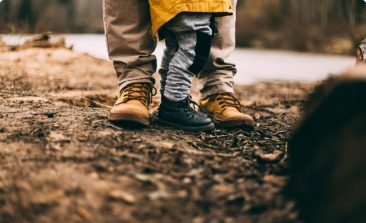Description
A newborn cuddles on her mother’s chest. Her mother says, “Oh, you must be hungry. This baby is learning that his loved ones will respond to his signals and communications.
A 9-month-old begins fiddling with food in his high chair as if wiping it clean with his hands. His dad notices and says, “Hey buddy, looks like you’re trying to tell me you’re done. How about I take you out of there and we can go to the park.” This baby is learning to be an effective communicator.
A 28 month old child is in the park. Pointing insistently, she says to her grandfather, “Del! Derl! Derl!” He says, “I’m sorry honey, I don’t understand. Could you say it again?” She keeps pointing and repeating herself a few times until finally her grandfather says, “Oh, the squirrel. Yes, I see him up there in the tree!” This toddler is learning that his loved ones are “hanging on” and working hard to understand their attempts at communication. A newborn sniffs her mother’s chest. Her mother says, “Oh, you must be hungry. There you go.” This baby is learning that his loved ones will respond to his signals and communications.
A 3-year-old talks to his mother on his way home from kindergarten. He tells her he liked the songs and the snack but didn’t like the feel of the sand on his hands. His mother listens and asks him questions. This toddler is learning that what he has to say matters to the people who love him and that he is a good communicator.
What should I do?
As soon as you get to touch your baby after birth, you begin to communicate with each other by exchanging your first looks, sounds and touches. Babies quickly learn about the world through their senses. Be sure to:
Talk to your baby whenever you have the opportunity. Even if your baby doesn’t understand what you’re saying, your calm, soothing voice conveys reassurance. Your newborn learns about life with almost every touch, so give him lots of tender kisses and your little one will find the world a calming place.
Always respond to your new-borns’ cries. Babies cannot be spoiled with too much attention. Quick responses to their cries let them know they are safe and caring for them. There will likely be times when you have met all needs but your baby will continue to cry. Don’t worry – your little one may be overstimulated, tired or just crying for no apparent reason.
Try to calm your baby down. When upset, some babies are comforted by movement, such as walking. B. Swinging or walking back and forth across the room. Others respond to noises such as soft music or the hum of a vacuum cleaner. It may take time to discover what best comforts your baby during these stressful times.
You might also like
Parenting Updates: Subscribe Now!

ALL UPDATES
Go from pregnancy to adolescents with our email bulletins, loaded with reasonable, modern data about bringing up youngsters and taking care of yourself as a parent.
SUBSCRIBE NOW
MOVIE REVIEWS
Find the best motion pictures for your family with our youngster amicable surveys. Search new deliveries and more seasoned motion pictures by age, rating and type.
SUBSCRIBE NOW
MENTAL HEALTH RESOURCES
Is it safe to say that you are an expert working with families? Get data about kid, adolescent and parent psychological well-being and prosperity.
SUBSCRIBE NOW











































